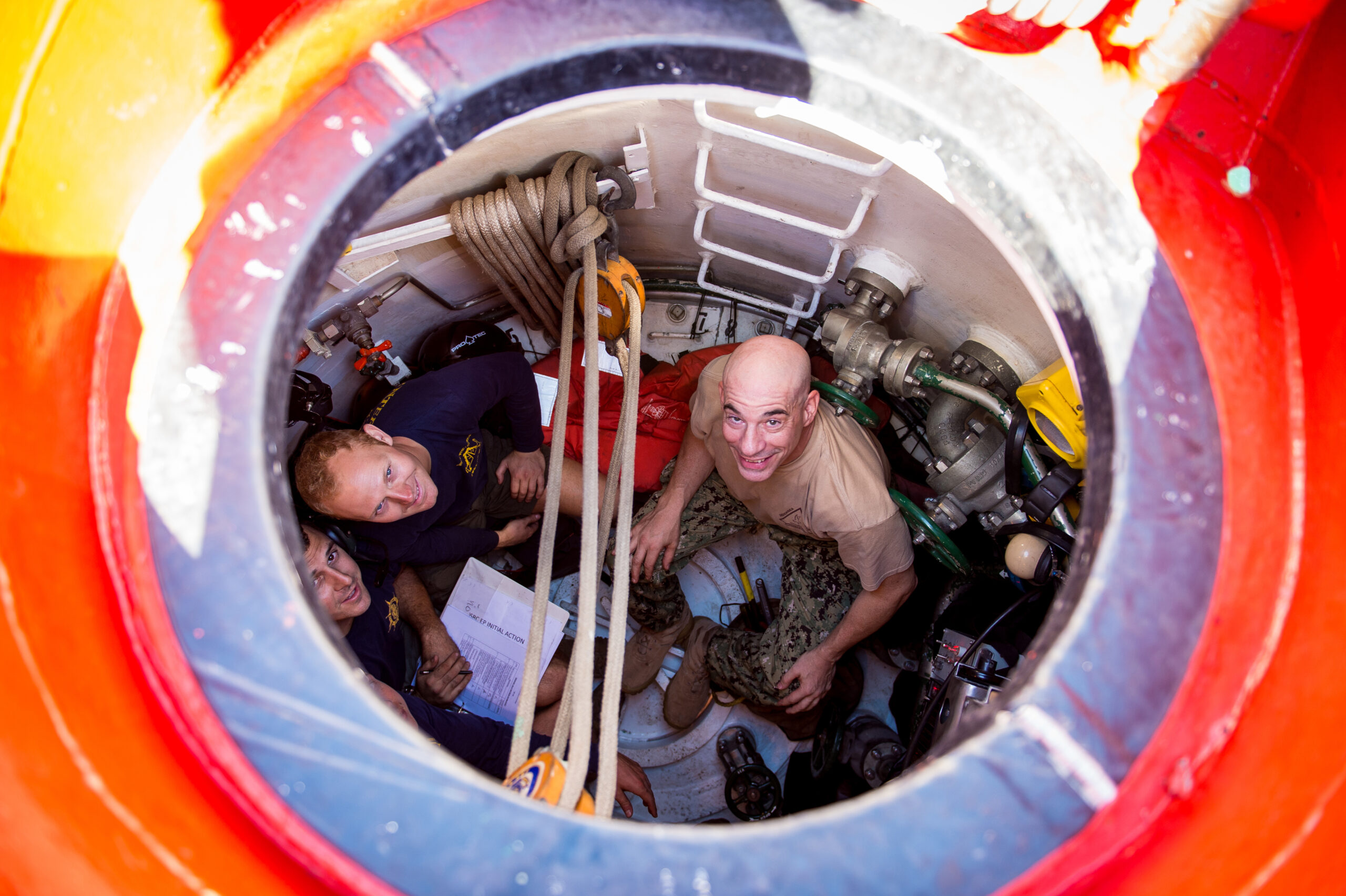If a submarine runs out of oxygen, the crew onboard will suffer from the effects of hypoxia, or oxygen deprivation. This can lead to symptoms such as confusion, nausea, and headaches.
The Importance Of Oxygen In Submarines
If a submarine runs out of oxygen, the crew onboard will begin to experience the effects of hypoxia, leading to oxygen deprivation. This can result in various symptoms such as headaches, nausea, confusion, and eventually loss of consciousness. To prevent this, submarines are equipped with systems that supply oxygen through pressurized tanks, oxygen generators, or oxygen canisters.
Oxygen’S Vital Role In Supporting Life In Submarines
Oxygen plays a crucial role in supporting human life within the confined space of a submarine. Without a constant supply of oxygen, the crew members would face serious health risks and potential fatality. Let’s explore the importance of oxygen in submarines.
Oxygen Supply In Submarines:
- Continuous oxygen replenishment: Submarines are equipped with systems that constantly replenish the oxygen supply, ensuring there is enough for the crew during their missions.
- Pressurized tanks: Oxygen can be stored in pressurized tanks onboard submarines, which are regularly monitored to ensure an adequate supply for the crew.
- Oxygen generators: Some submarines utilize oxygen generators that produce oxygen through the electrolysis of water. This ensures a self-sustaining supply during longer missions.
- Chemical reactions: Submarines may also carry special oxygen canisters that release oxygen through a chemical reaction. These canisters are designed to provide emergency oxygen in case of system failures.
The Importance Of Oxygen For Crew Members:
- Breathing support: Oxygen is essential for crew members to breathe and maintain their respiratory functions while submerged deep underwater. It allows them to extract oxygen from the air and dispose of carbon dioxide.
- Preventing suffocation: Without a sufficient supply of oxygen, the crew members would quickly experience suffocation, leading to unconsciousness and potential death.
- Brain function: Adequate oxygen levels are crucial for maintaining optimal brain function. Insufficient oxygen can lead to cognitive impairment, confusion, and poor decision-making.
- Physical performance: Oxygen is necessary for muscles to function properly. Without enough oxygen, crew members may experience fatigue, weakness, and reduced physical performance.
- Health and wellbeing: Continuous oxygen supply is vital for the overall health and wellbeing of the crew members. It ensures their bodies receive the necessary oxygen levels to function optimally and avoid detrimental health effects.
The function of a submarine heavily relies on a constant supply of oxygen to support the crew members’ lives. From breathing support to maintaining brain function and physical performance, oxygen plays a vital role in ensuring the safety and wellbeing of submariners.
Effects Of Oxygen Depletion In Submarines
If a submarine runs out of oxygen, the crew onboard will begin to experience the effects of hypoxia, or oxygen deprivation. This can lead to symptoms such as dizziness, confusion, and loss of consciousness. It is crucial for submarines to have proper oxygen supply systems in place to prevent these dangerous consequences.
Submarines are incredible feats of engineering that allow humans to explore the depths of the ocean. However, the limited oxygen supply onboard submarines presents a significant challenge if the levels start to decrease. In this section, we will explore the dangers of low oxygen levels for submarine crew members, the physical symptoms experienced when oxygen levels decrease, and the impact on decision-making, cognitive abilities, and mental health.
Dangers Of Low Oxygen Levels For Submarine Crew Members
Low oxygen levels can have severe consequences for crew members on a submarine. It is crucial to understand the dangers involved to prevent any life-threatening situations. Here are some key points to consider:
- Lack of oxygen can lead to hypoxia, a condition where the body is not receiving enough oxygen to function properly.
- Hypoxia can cause confusion, dizziness, and even loss of consciousness.
- Without immediate intervention, prolonged exposure to low oxygen levels can be fatal.
- The risk of accidents and errors significantly increases as crew members struggle to maintain focus and coordination.
Physical Symptoms Experienced When Oxygen Levels Decrease
When oxygen levels decrease in a submarine, crew members may experience various physical symptoms. These symptoms serve as warning signs and indicate the urgent need for intervention. Some of the common physical symptoms include:
- Shortness of breath: Crew members may find it increasingly difficult to breathe, leading to rapid breathing and a sense of suffocation.
- Fatigue: The body’s energy levels deplete rapidly when oxygen is in short supply, causing extreme tiredness and weakness.
- Headaches: Submarine crew members may experience severe headaches due to reduced oxygen supply to the brain.
- Cyanosis: The lack of oxygen can manifest through a bluish tint in the skin, particularly in the lips, fingertips, and earlobes.
Impact On Decision-Making, Cognitive Abilities, And Mental Health
In addition to the physical symptoms, low oxygen levels can also have a significant impact on crew members’ decision-making, cognitive abilities, and mental health. Here are a few key points to consider:
- Reduced cognitive function: Lack of oxygen impairs cognitive function, making it harder for crew members to think clearly and problem-solve effectively.
- Impaired decision-making: Crew members may make poor decisions or exhibit impaired judgment due to the effects of oxygen depletion.
- Increased stress and anxiety: Low oxygen levels can contribute to heightened levels of stress and anxiety among crew members, further compromising their mental well-being.
- Emotional instability: The effects of oxygen depletion can lead to mood swings and emotional instability, affecting crew members’ ability to cope with the situation.
The effects of oxygen depletion in submarines can pose significant dangers to crew members. From physical symptoms to compromised decision-making and mental health, it is crucial to prioritize proper oxygen supply and address any issues promptly to ensure the safety and well-being of submarine crews.
Emergency Measures And Responses
When a submarine runs out of oxygen, the people onboard will start to experience the effects of hypoxia, or oxygen deprivation. Measures should be taken to ensure the crew’s safety in such emergency situations.
Systems In Place To Detect And Monitor Oxygen Levels:
- Submarines are equipped with advanced systems to constantly monitor the oxygen levels onboard. These systems use sensors and gauges to ensure that the crew has a continuous supply of breathable air.
- The oxygen levels are regularly checked and monitored in real-time to detect any fluctuations or potential issues.
- Submarines also have alarms and indicators that alert the crew when the oxygen levels are getting low, prompting them to take immediate action.
Safety Protocols And Emergency Procedures When Oxygen Runs Low:
- When the oxygen levels on a submarine start to diminish, strict safety protocols and emergency procedures are immediately activated.
- The crew members receive specialized training on how to respond in such situations, ensuring their safety and survival.
- The submarine goes into emergency mode, and all non-essential systems are shut down to conserve oxygen.
- Submarines are designed with emergency oxygen masks and escape equipment to facilitate the crew’s survival.
- The crew is directed to designated safe areas within the submarine that are equipped with additional oxygen supplies.
Emergency Reserves And Backup Systems To Provide Temporary Oxygen Supply:
- Submarines are equipped with emergency reserves of compressed oxygen that can be activated when the primary oxygen supply starts running low.
- These reserves are strategically stored and easily accessible to the crew during emergencies.
- Backup systems, such as oxygen generators, are also in place to produce additional oxygen if needed.
- These measures ensure that the submarine can provide a temporary oxygen supply until the primary systems are restored or until the submarine surfaces.

Credit: www.wearethemighty.com
Long-Term Consequences Of Oxygen Depletion
If a submarine runs out of oxygen, the crew will start to experience the effects of hypoxia, or oxygen deprivation, leading to symptoms such as headaches, nausea, and confusion. It is crucial for submarines to have sufficient oxygen supply to avoid these long-term consequences.
Lack of oxygen in a submarine can have severe long-term consequences on both the crew members and the equipment. Let’s explore the potential risks, damages, and challenges below:
Potential Risks To Crew Members’ Health And Well-Being:
- Hypoxia: When a submarine runs out of oxygen, crew members will be at a high risk of experiencing hypoxia, which is a condition caused by oxygen deprivation. This can lead to symptoms such as dizziness, confusion, fatigue, and even loss of consciousness.
- Brain damage: Prolonged oxygen deprivation can result in irreversible damage to the brain, affecting cognitive function, memory, and overall mental well-being.
- Suffocation: In extreme cases, if the oxygen supply isn’t restored promptly, crew members may suffocate, leading to potentially fatal consequences.
Damage To Equipment And Infrastructure Due To Oxygen Deprivation:
- Corrosion: When oxygen levels drop, metal surfaces within the submarine can start corroding due to the lack of oxygen. This can weaken the structural integrity of the submarine and compromise the safety of the crew.
- Electrical system failure: The electrical systems of the submarine heavily rely on oxygen for proper functioning. Without an adequate oxygen supply, critical components may malfunction or fail, leading to potential power outages or equipment damage.
Challenges Faced In Re-Establishing Oxygen Supply In Remote Locations:
- Limited resources: Submarines often operate in remote locations or underwater, which presents challenges in replenishing the oxygen supply. It may take time to establish contact with support teams and arrange for necessary equipment and resources to be delivered.
- Safety risks: Replenishing the oxygen supply in a submarine requires precise procedures to ensure the safety of the crew. It may involve transferring oxygen cylinders or activating emergency oxygen generators, which can be hazardous if not executed properly.
- Time-consuming process: Restoring the oxygen supply is not an instantaneous process. It involves careful coordination and time-consuming steps, including checks, system reactivation, and monitoring, before the submarine can regain a sufficient oxygen level for the crew’s life support.
Running out of oxygen in a submarine can have severe consequences on both the crew members’ health and the equipment’s integrity. It is crucial to prioritize the timely replenishment of oxygen to prevent any long-term damage or life-threatening situations.
Frequently Asked Questions For What Happens If A Submarine Runs Out Of Oxygen
How Long Can A Submarine Go Without Air?
A submarine can go for a limited time without air before the crew starts experiencing the effects of oxygen deprivation.
How Long Before The Submarine Runs Out Of Oxygen?
The submarine will run out of oxygen causing the crew to pass out and potentially die.
How Do People In Submarines Get Oxygen?
In submarines, oxygen is provided from pressurized tanks or an oxygen generator that converts water into oxygen.
How Much Oxygen Is Left In The Lost Submarine?
The exact amount of oxygen left in the Lost submarine is unknown.
What Are The Consequences If A Submarine Runs Out Of Oxygen?
Running out of oxygen in a submarine can lead to the crew experiencing hypoxia, or oxygen deprivation.
Conclusion
In the event that a submarine runs out of oxygen, the consequences can be severe. The crew onboard will begin to experience the effects of hypoxia, or oxygen deprivation. This can result in symptoms such as headaches, nausea, confusion, and in extreme cases, loss of consciousness.
Without a fresh supply of oxygen, the crew’s survival would be at serious risk. To combat this situation, modern submarines are equipped with various oxygen supply systems. These can include pressurized tanks, oxygen generators, or oxygen canisters that release oxygen through chemical reactions.
Additionally, emergency reserves are typically available to provide enough oxygen for a limited time period. It is crucial for submarines to have a reliable and sufficient oxygen supply to ensure the safety and survival of the crew. The technology and systems in place are designed to prevent the depletion of oxygen, allowing submarines to carry out their missions effectively and safely in underwater environments.


